Condition of park ecosystems
State of the Parks Fourth Edition
Ecosystem condition is broadly measured by various factors such as the expected vegetation structure and composition, and ecological processes. These can be influenced by a range of drivers, threats and disturbances, which can include external factors such as climate, direct management to reduce the impact of threats and indirect management through community education. The overall goal for management of natural assets is to maintain or improve ecological diversity and processes to ensure the parks’ long-term viability and resilience.
Indicators
Condition of terrestrial ecosystems
Condition of marine ecosystems
Condition of freshwater ecosystems
Condition of significant and threatened flora and fauna
Extent management objectives met for park ecosystems
Data confidence
Condition of terrestrial ecosystems
- Park managers reported that the condition of natural values was good or very good in 54% of relevant terrestrial parks (52% of park area).
- This percentage has remained stable since 2013.
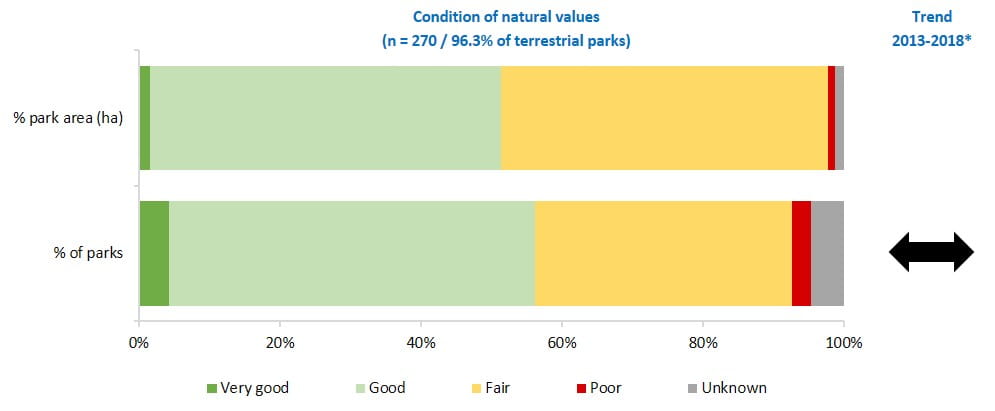
*Calculated from parks that were assessed in both 2013 and 2018 (n = 238), excluding parks where condition was unknown
Data source: Parks Victoria State of the Parks assessments
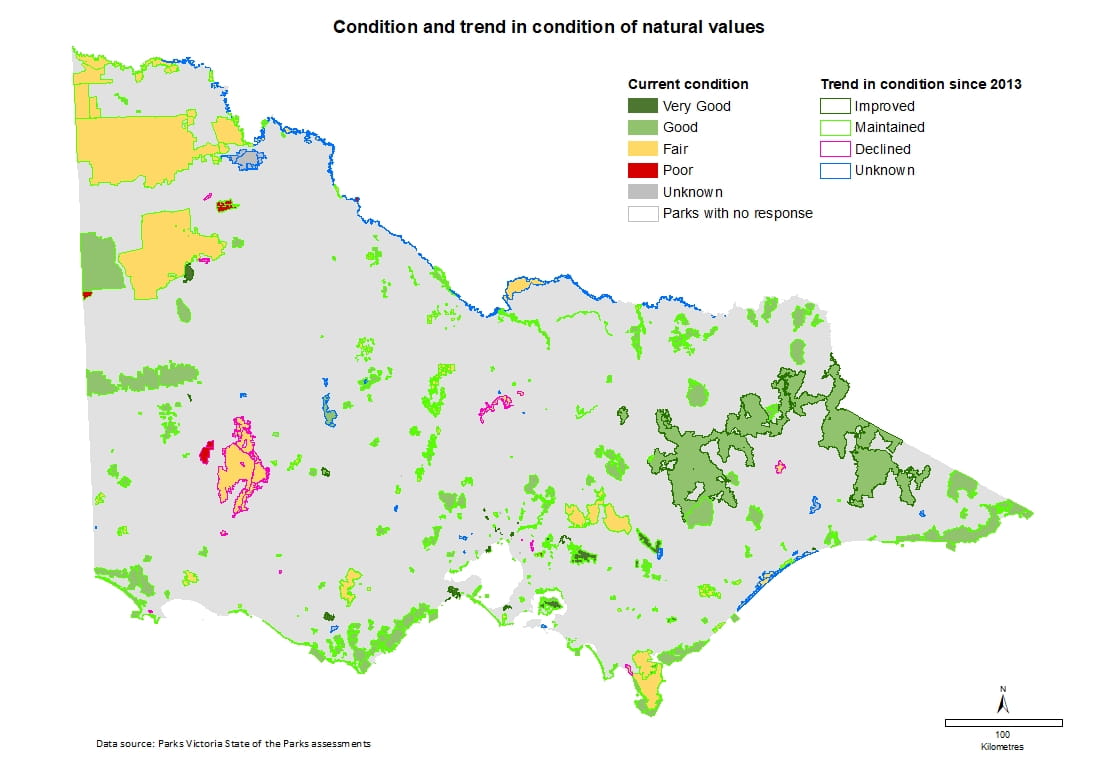
Condition of marine ecosystems
- Park managers reported that the condition of natural values was good or very good in 93% of marine parks (75% by park area).
- This percentage has remained stable since 2013.
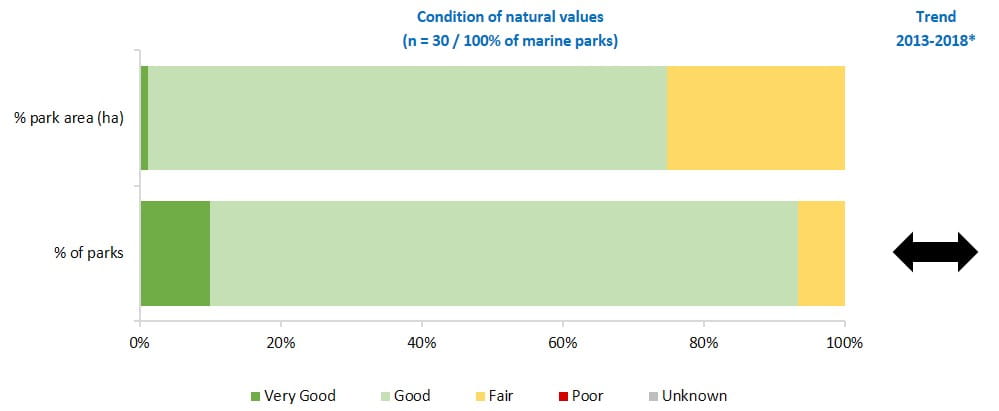
*Calculated from parks that were assessed in both 2013 and 2018 (n = 29), excluding parks where condition was unknown
Data source: Parks Victoria State of the Parks assessments
Condition of freshwater ecosystems
Assessment of the condition of Parks Victoria’s diverse network of freshwater ecosystems is based on the Index of Wetland Condition and the Index of Stream Condition, both developed and implemented by the Department of Energy, Environment and Climate Action (DEECA). This assessment was last undertaken in 2011.
Extent and condition of wetlands and rivers for each of the IUCN categories across the parks network
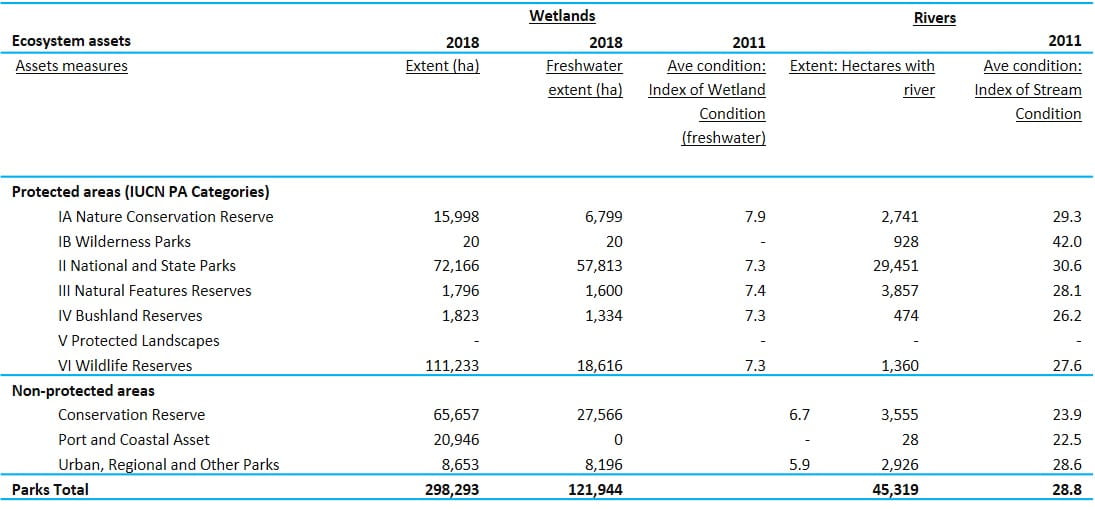
Data source: DEECA
Index of stream condition in parks by landscape
- According to the 2010 Index of Stream Condition, the streams in the Greater Alps landscape are in the best condition, with over 80 per cent of assessed streams in excellent or good condition. However, 50 per cent of the streams in the River Red Gum and Western Port and Port Phillip landscapes are in poor or very poor condition.
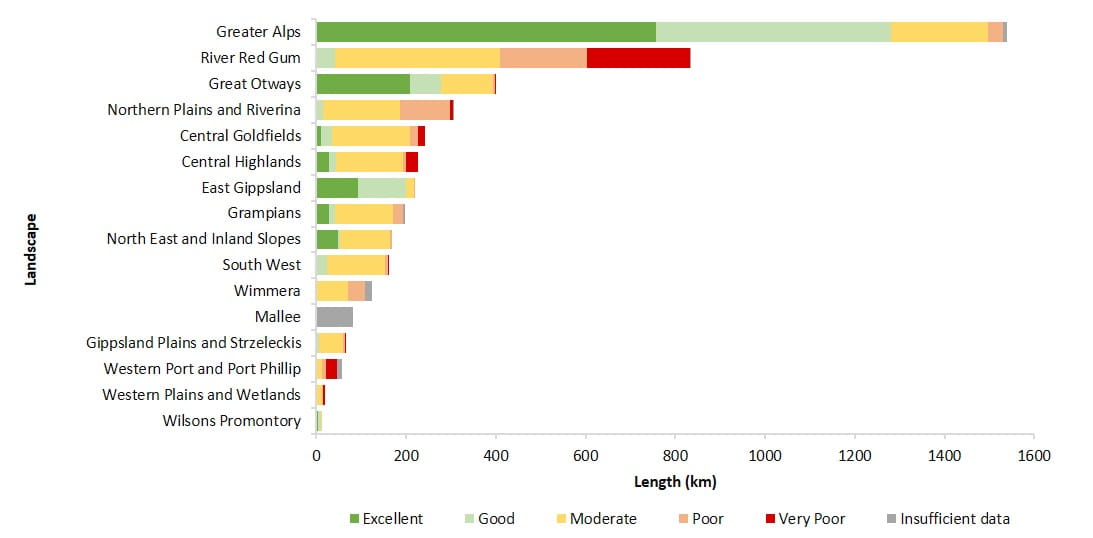
Data source: DEECA
Index of wetland condition in parks by landscape
- Based on the average Index of Wetland Condition scores from 2009 to 2011, the wetlands in the Grampians, Greater Alps and South West landscapes are in the best condition.
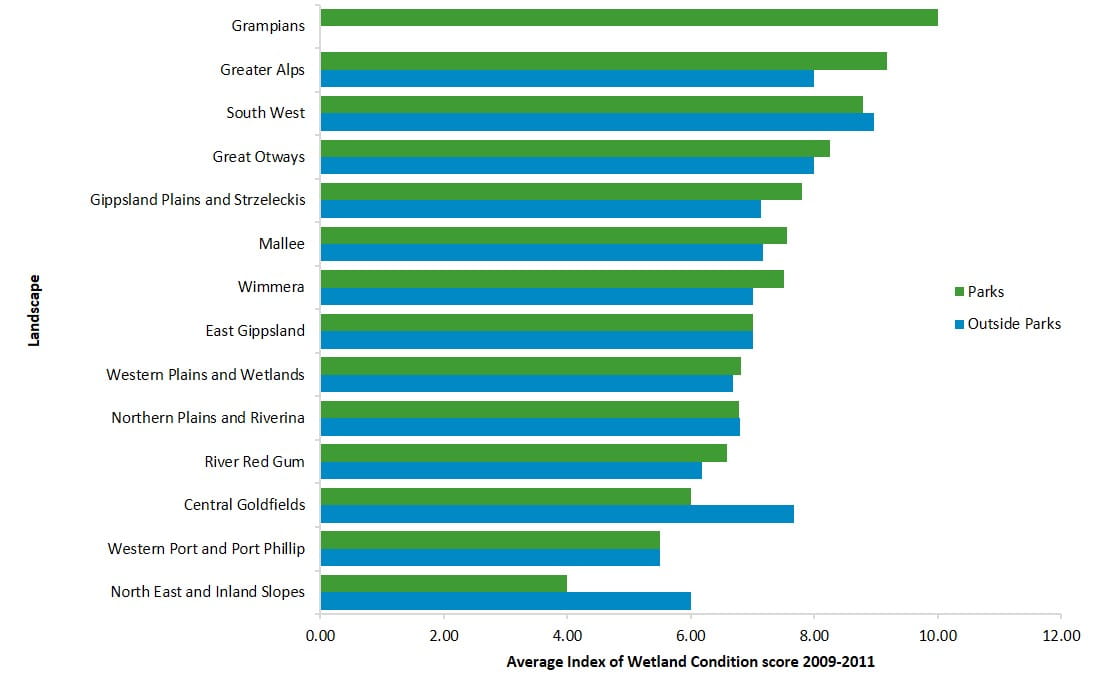
Data source: DEECA
Condition of threatened flora and fauna
- Park managers reported that the habitat condition for threatened communities, flora and fauna was very good or good in more than 30 per cent of records. However, the condition of habitat was unknown in approximately 20% to 50% of records.
- Habitat condition for threatened communities, flora and fauna has remained stable since 2013.
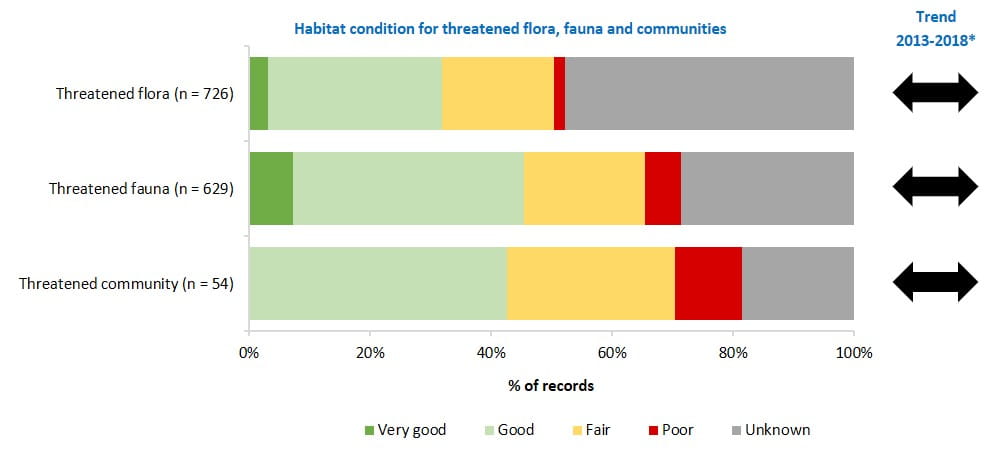
*Calculated from parks that were assessed in both 2013 and 2018 (Flora, n = 76; Fauna, n = 197; Communities, n = 23), excluding parks where condition was unknown
Data source: Parks Victoria State of the Parks assessments
Extent management objectives met for condition of park ecosystems
Extent management objectives met for nature conservation in terrestrial parks
- Park managers reported that objectives for nature conservation in terrestrial parks were fully or substantially met in almost 40 per cent of relevant parks (over 60% by park area).
- Although the extent to which management objectives were met for most parks remained stable, (67%), significantly more parks reported that it declined (24%) than improved. The decrease was mostly driven by parks moving from substantially meeting management objectives in 2013 to only partially meeting management objectives in 2018. This may, in part, be due to more parks now having comprehensive objectives detailed in conservation action plans.
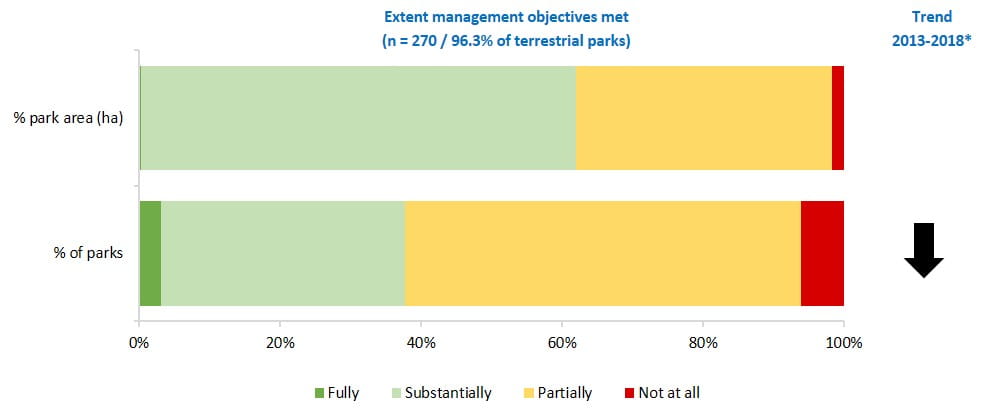
*Calculated from parks that were assessed in both 2013 and 2018 (n = 253)
Data source: Parks Victoria State of the Parks assessments
Extent management objectives met for nature conservation in marine protected areas
- Park managers reported that management objectives for nature conservation in marine parks were fully or substantially met in over 30% of the 30 marine protected areas (or more than 60% by park area).
- The extent to which objectives were met for nature conservation in marine parks has remained stable since 2013.
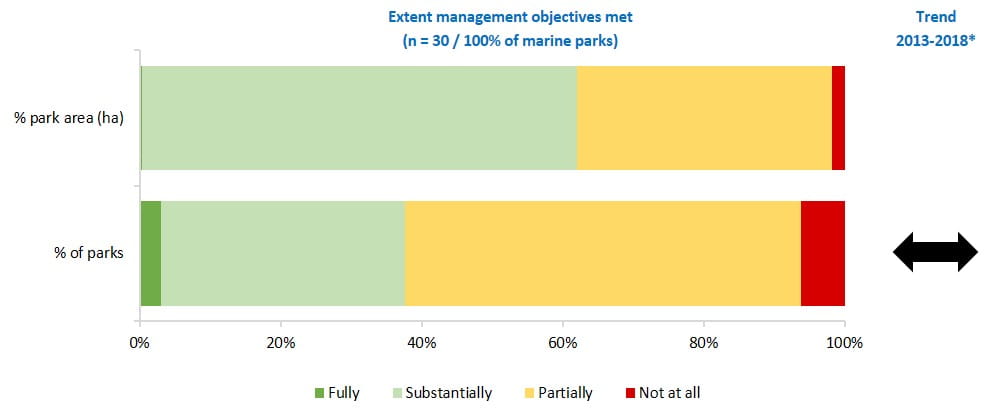
*Calculated from parks that were assessed in both 2013 and 2018 (n = 30)
Data source: Parks Victoria State of the Parks assessments
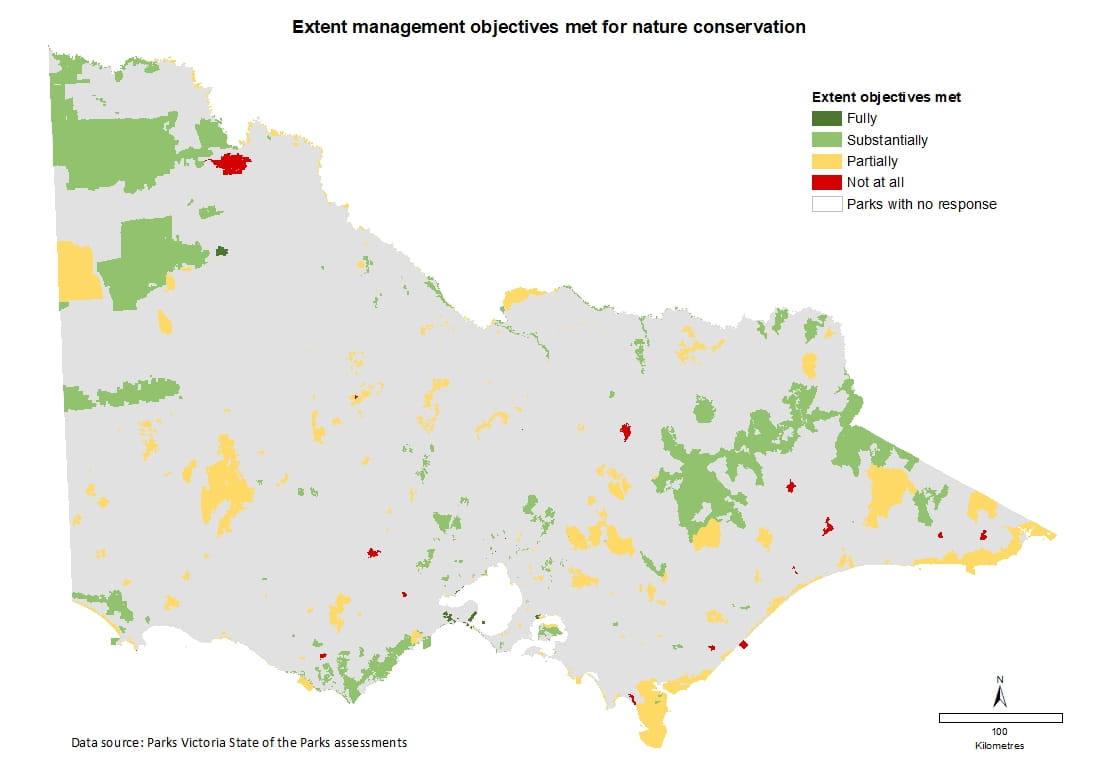
Extent management objectives met for nature conservation by park type
- Park managers reported that slightly more conservation reserves met management objectives (39%) compared to other park types, with urban/other parks showing a lower result (32%).
- The extent to which objectives were met for nature conservation in National Park Act – marine and urban and other parks has remained stable since 2013.
- Although the extent to which management objectives were met remained stable for most conservation reserves and National Parks Act - terrestrial parks (67% for both park types) significantly more parks reported that it declined (25% and 24%, respectively) than improved (8% and 9%, respectively). The decrease was mostly driven by parks moving from substantially meeting management objectives in 2013 to only partially meeting management objectives in 2018. This may, in part, be due to more parks now having comprehensive objectives.
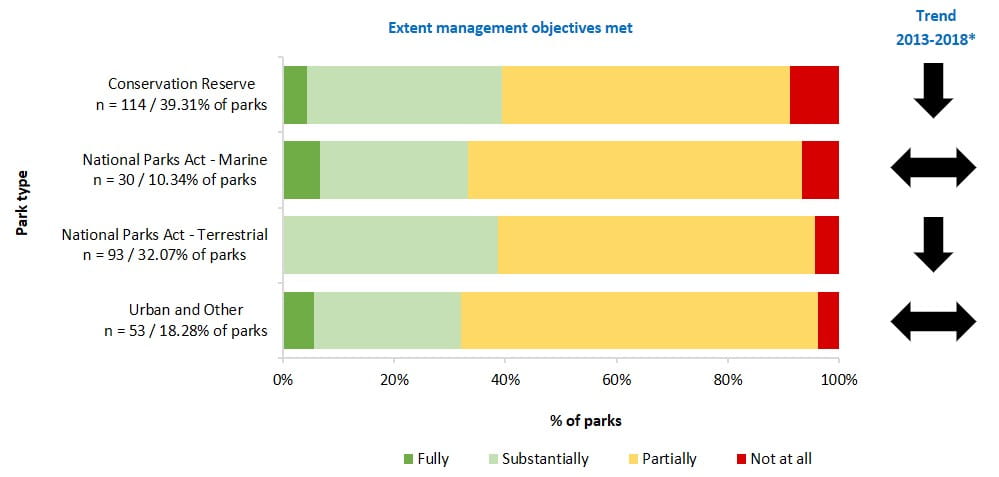
*Calculated from parks that were assessed in both 2013 and 2018 (Conservation Reserve, n = 111; National Parks Act – Marine, n = 30; National Parks Act – Terrestrial, n = 93; Urban and Other, n = 49)
Data source: Parks Victoria State of the Parks assessments
Data confidence
Confidence in park manager assessments for condition and management outcomes of terrestrial parks (n = 260 parks)

Data source: Parks Victoria Parks Victoria State of the Parks assessments
Confidence in park manager assessments for condition and management outcomes of marine protected areas (n = 30 parks)

Data source: Parks Victoria State of the Parks assessments
Go to previous section of State of the Parks Fourth Edition: Status and management of key threats to park ecosystems
Go to next section of State of the Parks Fourth Edition: Management of Traditional Owner cultural values

